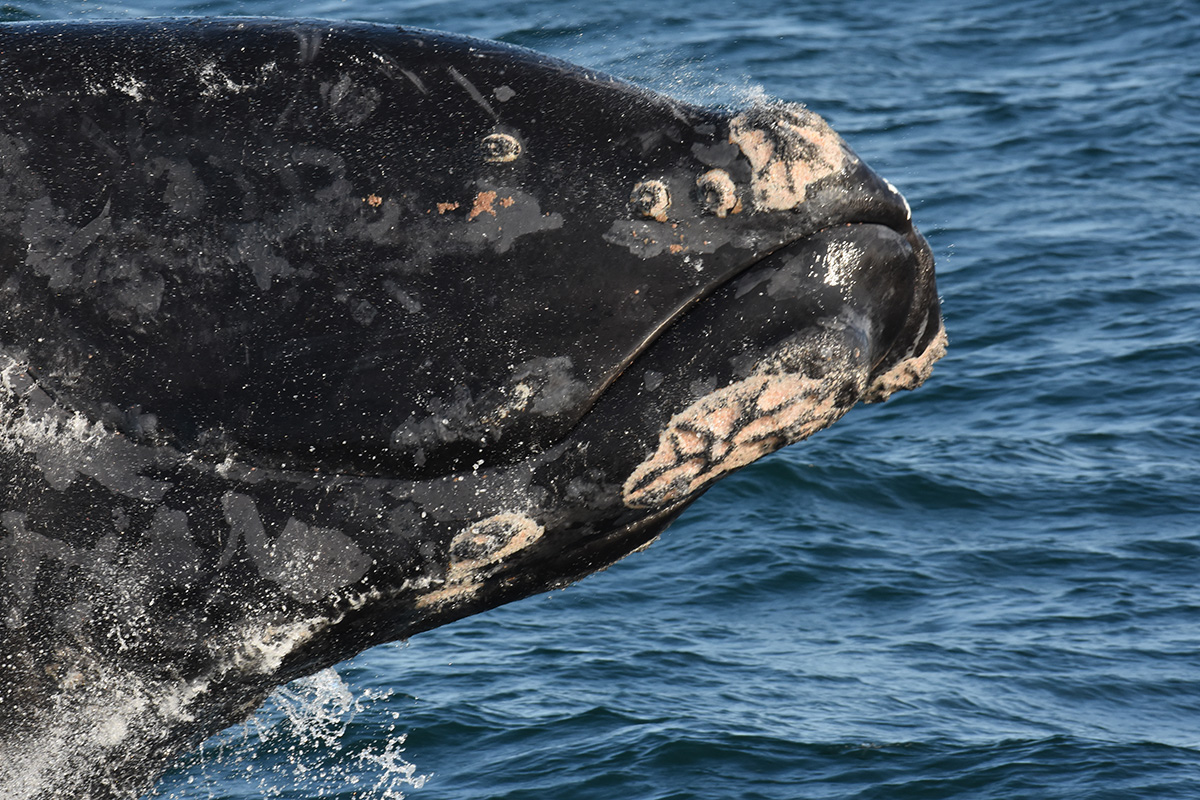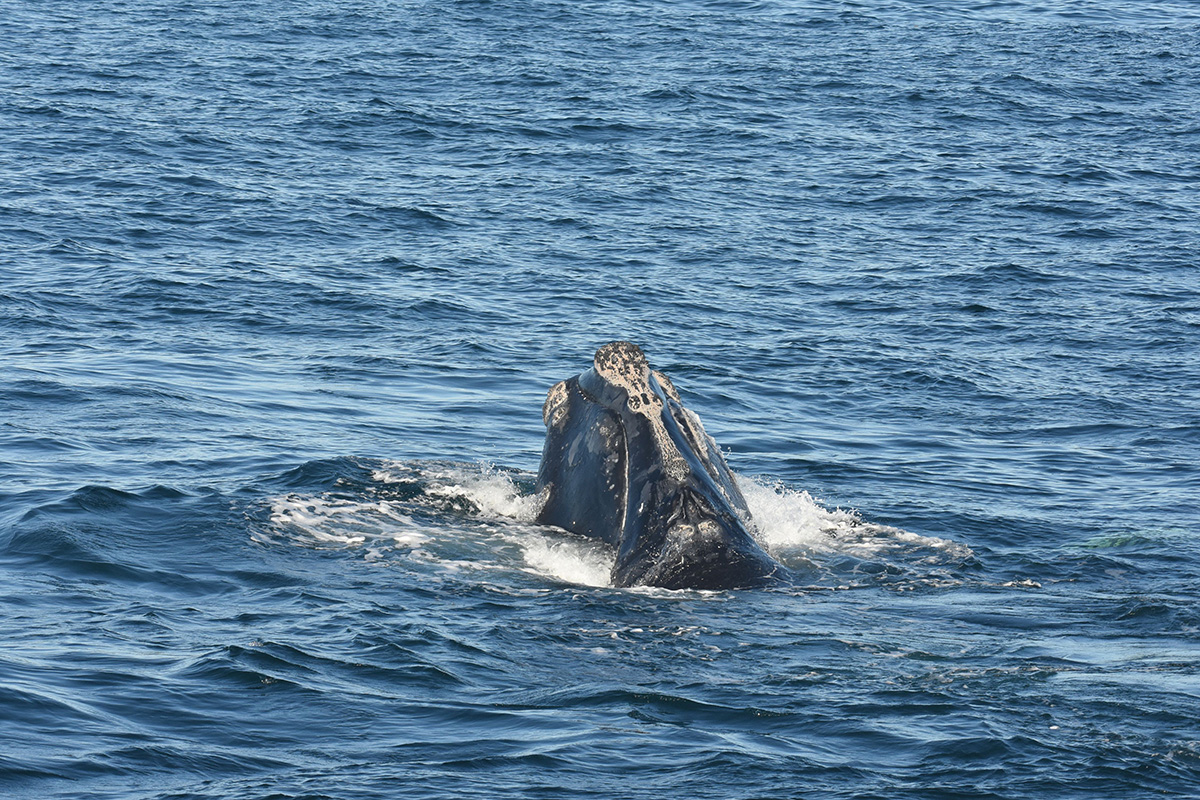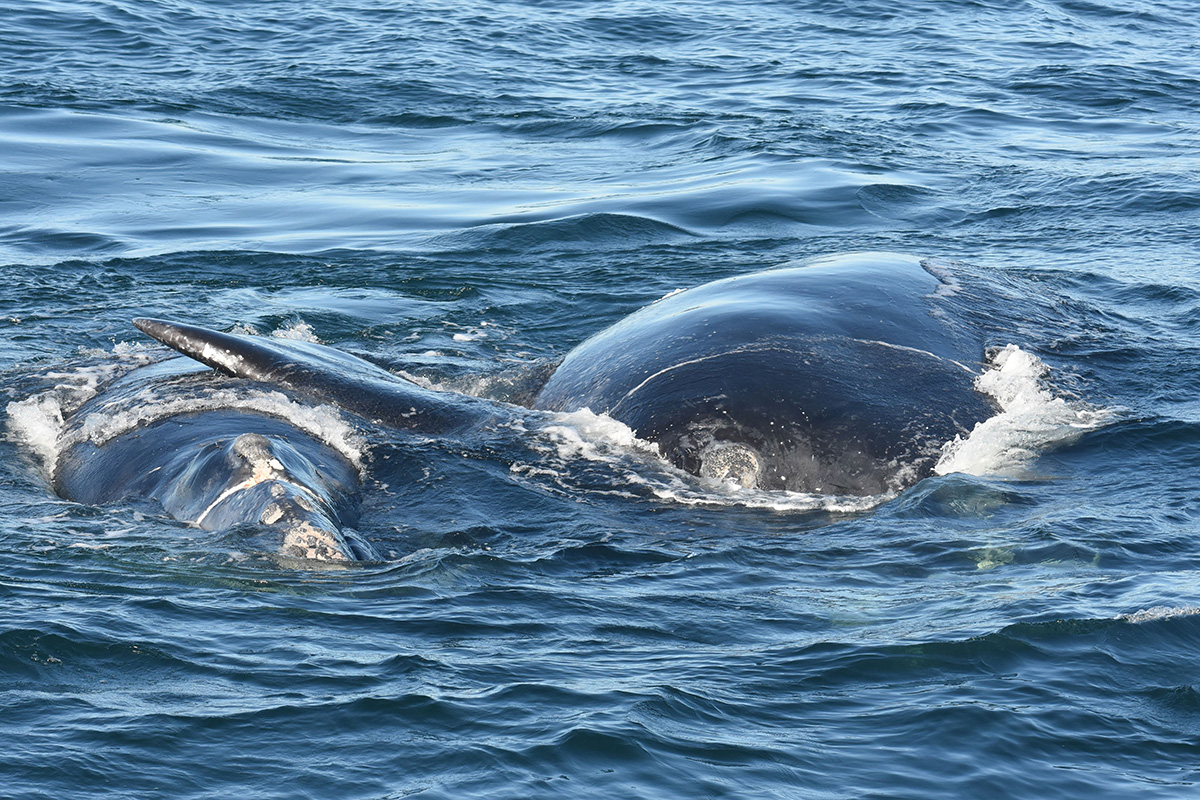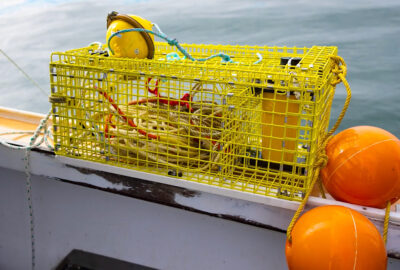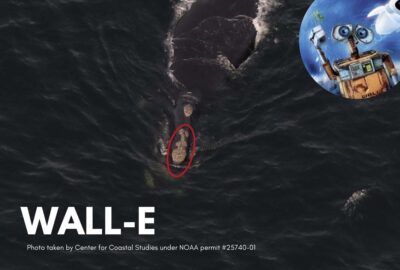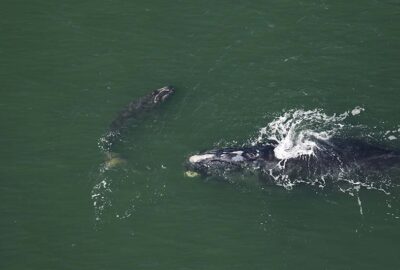The Aquarium will be closed to the public on Wednesday, April 2, for an internal staff event. Regular operating hours will resume on April 3.
Gulf of St. Lawrence: August In a Nut Shell
By Amy Warren on Tuesday, February 08, 2022

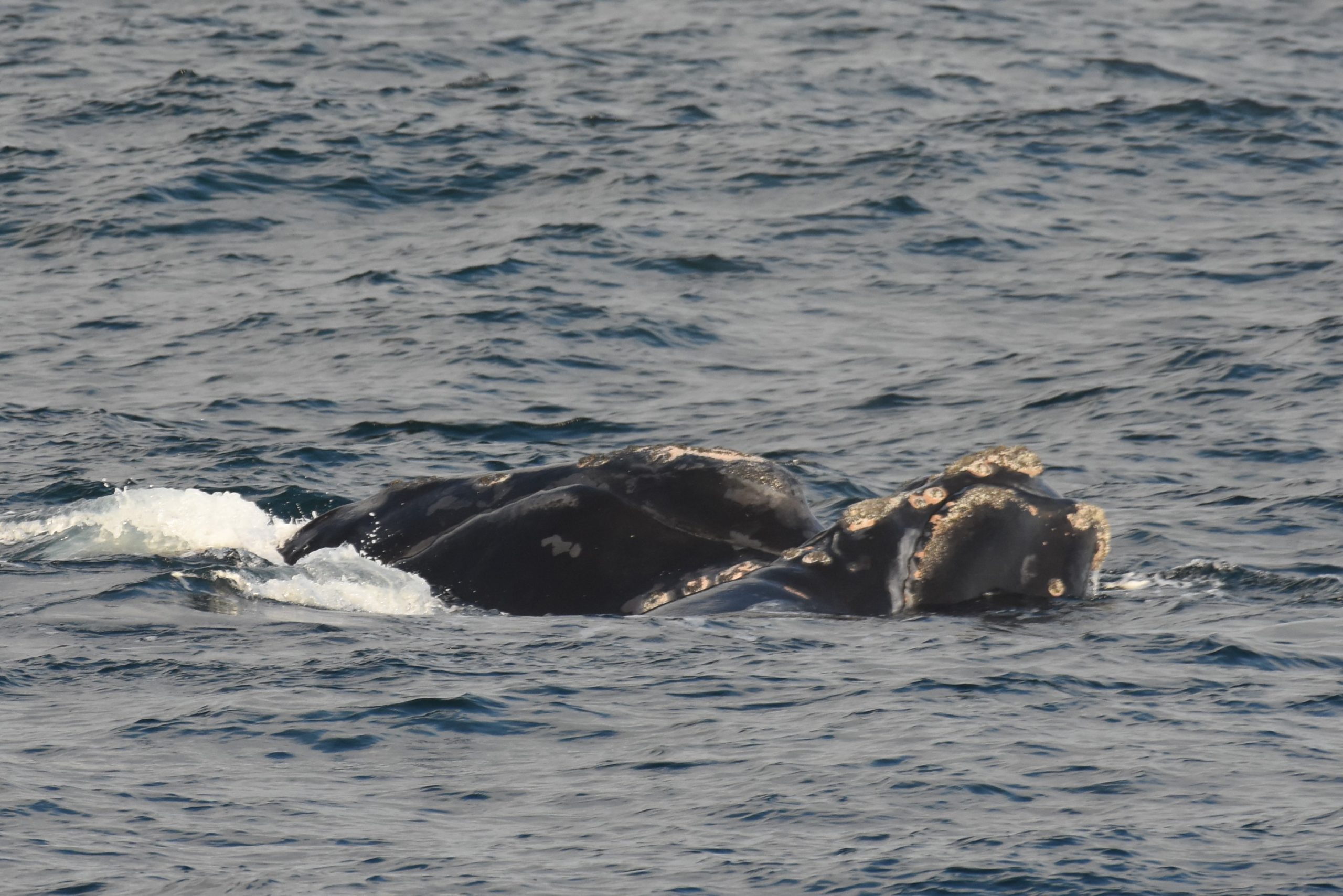
After two weeks of rest and a couple crew changes, the right whale team was aboard the J.D. Martin and ready for the second leg of our summer research in the Gulf of St. Lawrence. Thanks to the previous cruise, and ongoing aerial surveys by the Canadian Department of Fisheries and Oceans (DFO), we had a good idea of where to start our search for whales. On August 4, the crew ventured out to the northern area of the Shediac Valley and found whales of all shapes and sizes! In addition to seeing nine individual right whales, we also saw lots of fin whales, minke whales, Atlantic white-sided dolphins, seals, and a humpback whale! And that was just the beginning!
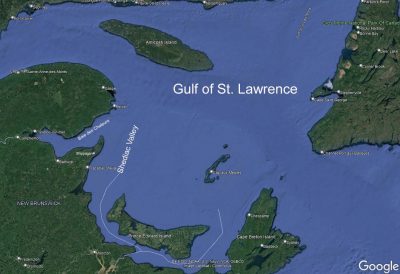
While the crew typically gets excited about all our whale sightings, one of our most interesting sightings of the entire trip was on Day 1: a small, curious fin whale. Fin whales typically reach lengths of 60-70ft, but this one was approximately 23ft long. It’s hard to say exactly how old the whale was, but perhaps a year or less!
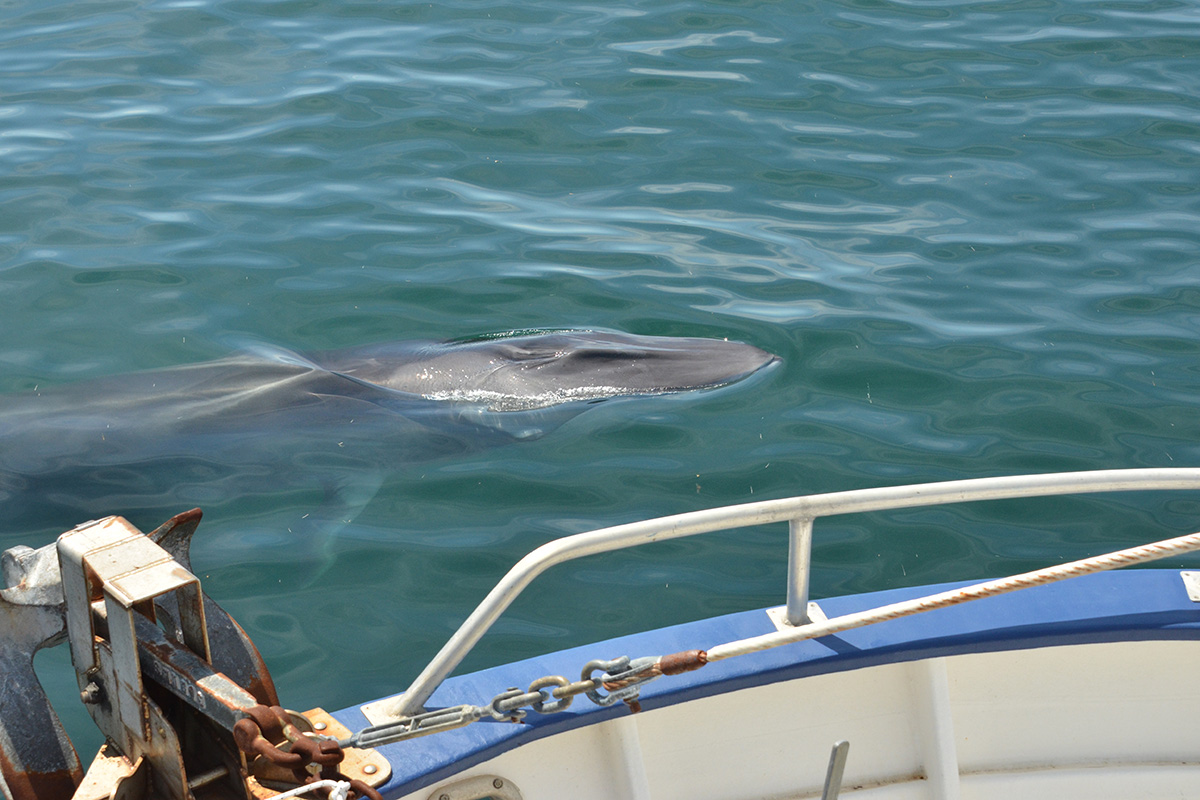
The boat was stopped, documenting right whales, when this young fin whale surfaced nearby to check us out, and it continued to swim all around the boat for several minutes. Not only is this curious behavior very rare for many whale species, but younger fin whales are not seen nearly as often as species like right and humpback whales. It was certainly a highlight for most of us on board!
Entanglements are one of the major risks North Atlantic right whales face. Here in the southwestern GSL, snow crab is the fishery the whales are most likely to encounter. Thanks to quick action by the Canadian government in recent years, right whale feeding areas in the GSL are closed to fishing during the months when right whales are present.
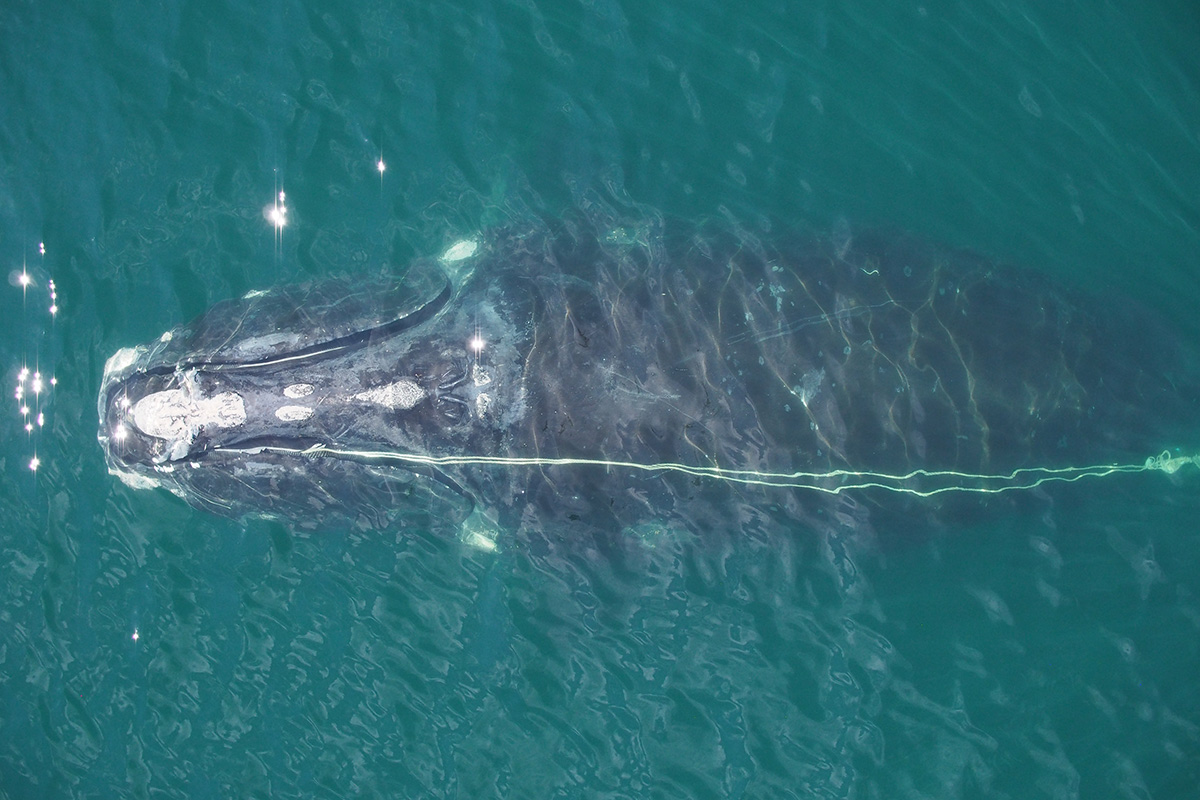
One day during this trip, while we continued to documenting the currently entangled Snow Cone (Catalog #3560), she physically led us to a buoy at the surface that was still attached to fishing gear (in a closed area). Just like on previous cruises, our captain was able to get in touch with DFO and get permission to haul the trap and return the gear to shore. As right whale scientists, most of the work we do helps to inform management and policies, and resulting changes can sometimes take years. Pulling that trap out of the water was very rewarding for us, we possibly prevented an entanglement from happening, a rare moment of instant gratification. Though likely a coincidence, we couldn’t help but notice the symbolism of Snow Cone, an actively entangled whale, leading us to this lost gear.
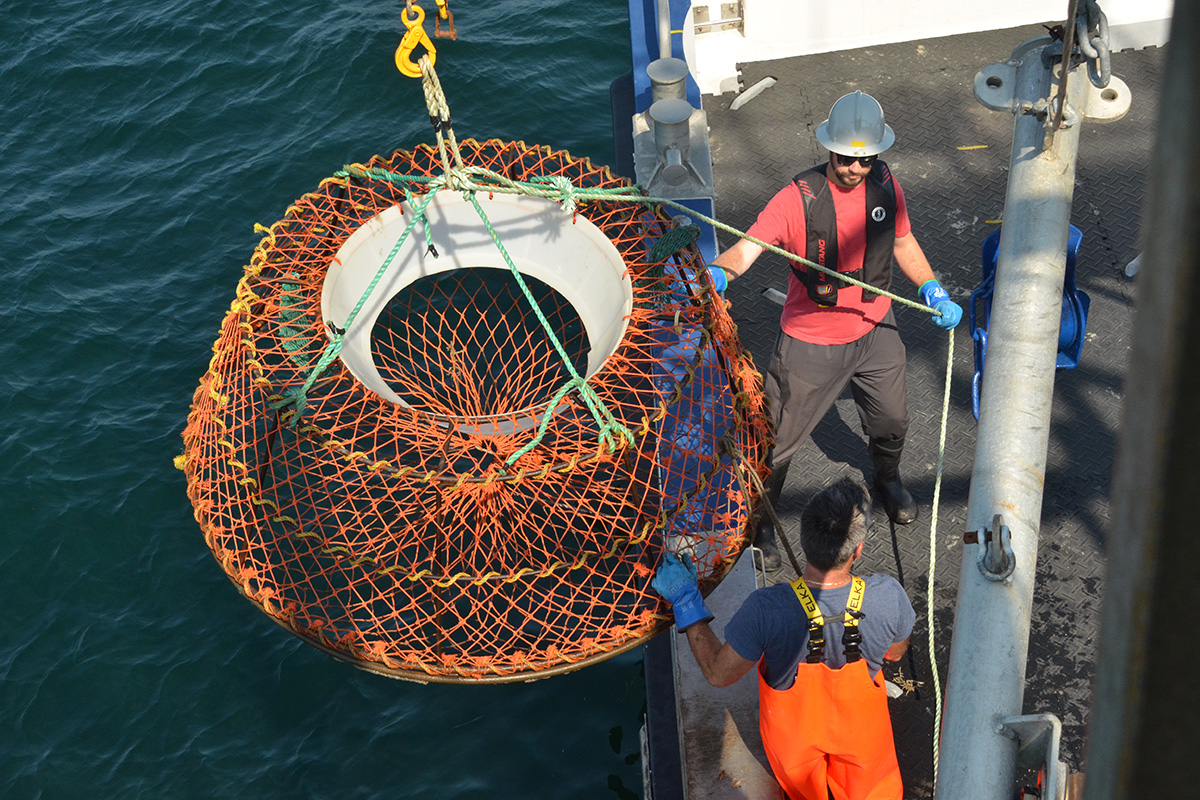
This August cruise really struggled to find good weather. Being on a crab fishing vessel (with stabilizers), the boat has no problems handling rough weather, but unfortunately our research methods are not quite as tough. Firstly, much of our equipment (drone, nets, oceanography cage) cannot be used safely in windy or rough conditions. Secondly, those rough conditions make spotting and photographing whales difficult. Captain Martin often jokes with us about how our roughest days still feel like being on a calm pond to him and his fishing crew. The first week of our scheduled cruise we only had about 2.5 days at sea. But by week two, we had a bit more luck with a 6-day stint out at sea. In all honestly, the weather during those six days still wasn’t great, but we made it work! The right whale sightings had started to thin out during this time, so we opted to go on a scouting adventure to the southern portion of the Shediac Valley to see what was down there. We struggled through a couple days of rain, fog, and minimal sightings before we finally turned back to return to the northern area where we had photographed right whales in early August.
Our penultimate survey day tested our stomachs and our stamina. We started the day with beautiful calm conditions and a slow increase of right whale sightings. But as we continued, so did the wind. I’ve spent a lot of time at sea, but I’m not sure I’ve ever seen conditions change that quickly. We were very aware of the increasing wind and wave height. In the course of an hour, the seas went from flat calm to 5-6ft. Once the waves got larger than the whales, we were forced to halt our survey efforts, and reassess our plan. We were leaning towards heading back to the dock, but given our cruise schedule, that would be the end of our field work and we would risk losing one last potential day. We spent the afternoon riding out the waves and heading back in the direction of the dock, but staying ready in case conditions improved. Our patience was rewarded at sunset. The waves had calmed a bit and we came across a sighting of a mom-calf right whale pair! We were able to document some very special bonding behavior between Giza (#3020) and her 2021 calf in the golden hour lighting.
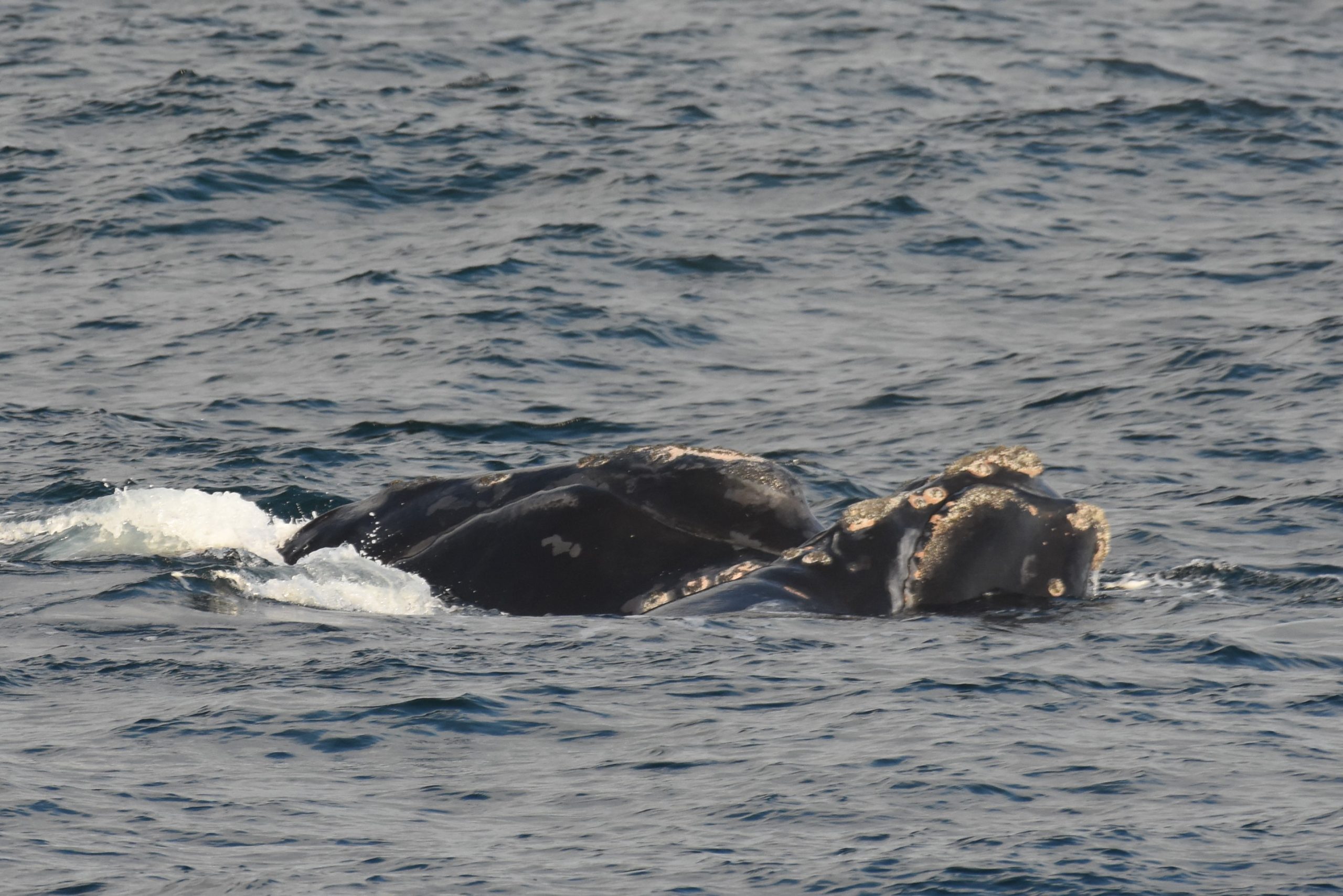
After lots of consulting with our captain about the weather, we opted to spend one last night at sea, but in closer range to the dock in case the forecast was worse than predicted. We woke up to a beautiful, sunny, calm day! Being the last possible survey day, we couldn’t venture too far as we had to return to the dock that evening. We decided on another adventure, surveying the Baie des Chaleurs. Since we didn’t know the last time that area had been properly surveyed, we didn’t have high hopes for finding right whales, but we were thankfully mistaken! There were all kinds of whales everywhere, including fin whales, right whales, humpback whales, and dolphins! We had a busy day chasing whales and getting lots of drone flights in. In addition to all of the whale sightings, we had some fun bird sightings as well. Perhaps due to our semi-close proximity to land, we had quite a few different species of warblers visit the boat and eat some of the flies and insects we had acquired offshore. Because these birds can’t land on water, many of them used our boat, and even some of our crew, to take a break!
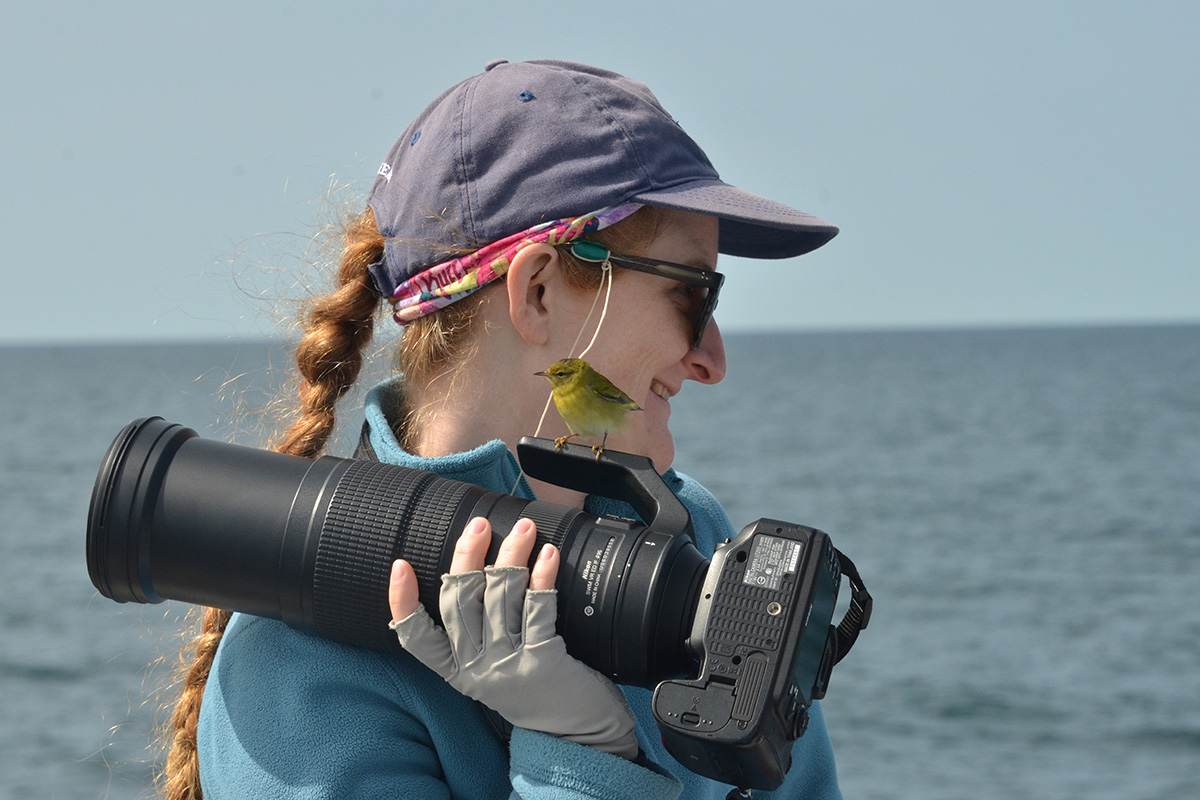
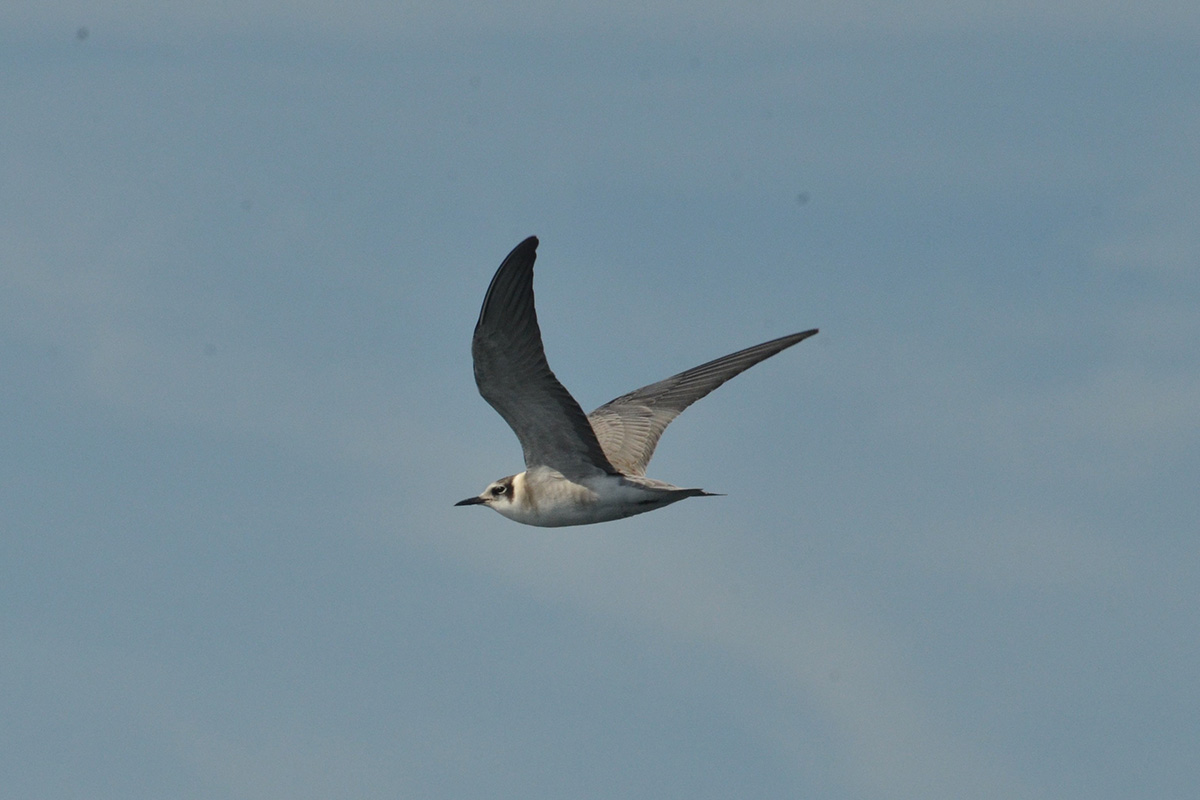
We ended the day trying to catch up to distant whale blows while the sun was setting over Bonaventure Island. Once it was too dark to see any whales, we headed back to the dock. It wasn’t until the wee hours of the morning that we arrived back to the dock in Shippagan, New Brunswick. which marked the end of another successful GSL season!
/
GSL by-the-numbers • July & August 2021
We surveyed a total of 700nm. There were 391 right whale sightings of 108 individuals, including 7 mother/calf pairs! In addition, we recorded 81 fin whales, 99 minke whales, 13 humpback whales, 695 Atlantic white-sided dolphins, 11 basking sharks, 66 harbor porpoise and 9 seals!
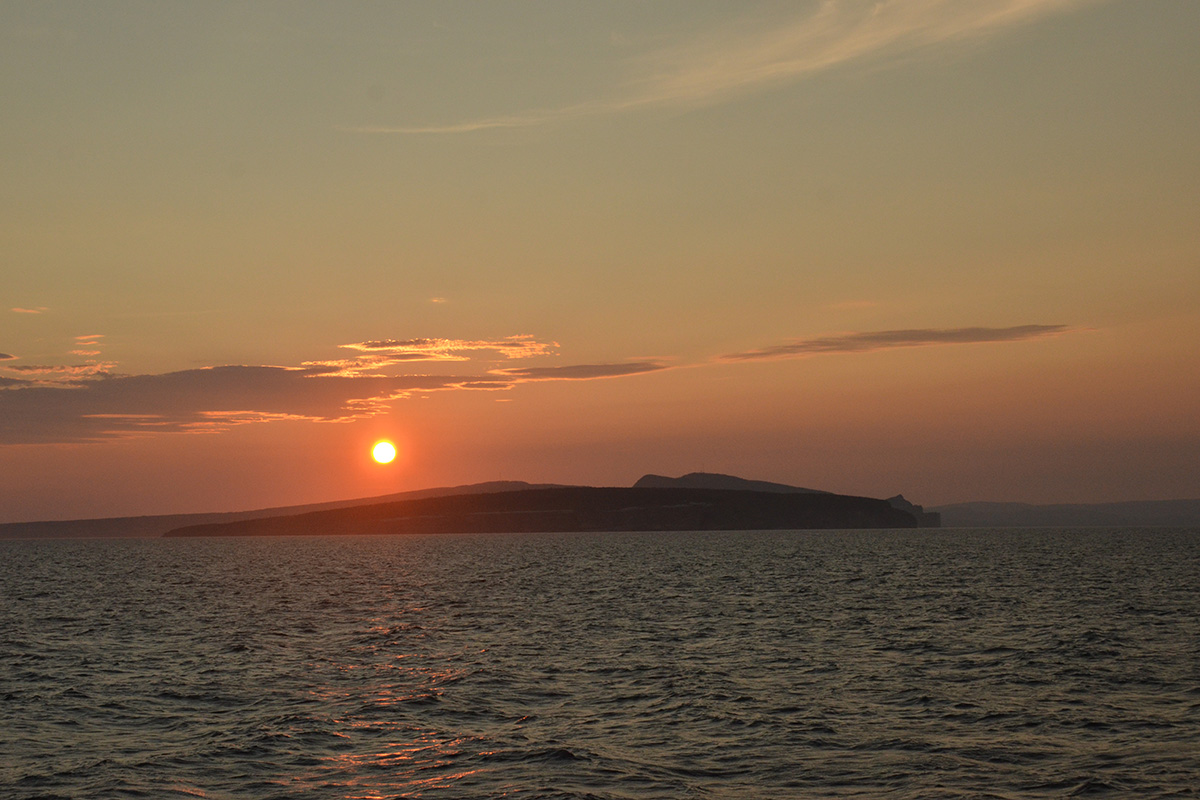
We’re extremely grateful to Irving Oil for partnering with us on this critical research since 1998! We are also grateful to Irving Oil and the Island Foundation for allowing us to operate during these financially challenging times. This work would not be possible without their generosity!

